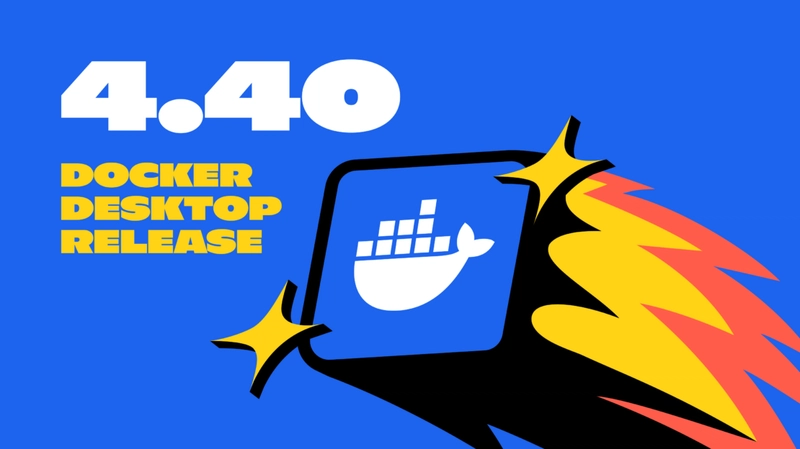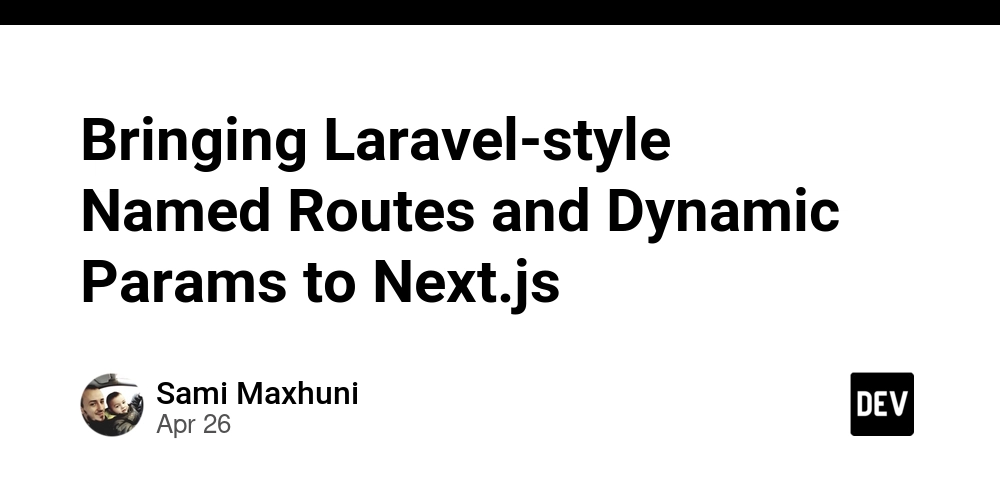Arbitrum and Sustainable Development: Bridging Blockchain and Ecology
Abstract This post explores the fascinating convergence between blockchain technology and sustainable development, with a special focus on Arbitrum—a layer-2 scaling solution for Ethereum. We discuss Arbitrum’s eco-friendly advantages, its role in transforming transaction efficiency, and how it unlocks economic and social sustainability. The article offers background on blockchain technology, detailed core concepts, practical use cases, challenges, and future trends in sustainable blockchain practices. Throughout the post, key resources and links (including the Original Article) reinforce the benefits of merging blockchain innovation with ecological responsibility. Introduction Digital transformation continues to reshape industries worldwide, and the need for sustainable development has become increasingly urgent. Today, blockchain is evolving from a niche financial tool into a platform that can address environmental and economic challenges. In particular, Arbitrum stands out as an innovative solution for reducing the environmental footprint of blockchain operations while enhancing transaction speed and lowering costs. This post delves into how Arbitrum bridges blockchain and ecology, ensuring that technological progress aligns with sustainable growth. Background and Context Blockchain technology initially gained prominence through proof-of-work (PoW) systems like Bitcoin and Ethereum. However, these decentralized networks had notable environmental drawbacks due to high energy consumption. As concerns grew about the carbon emissions associated with NFTs and other blockchain applications, the need for greener alternatives became clear. Arbitrum, developed by Offchain Labs (visit Offchain Labs for more details), is a promising layer-2 solution. It alleviates Ethereum’s scaling issues by reducing transaction fees and increasing throughput. By moving many operations off-chain and settling on the Ethereum mainnet, Arbitrum minimizes energy use and provides a sustainable footprint for blockchain technology. Blockchain is no longer viewed solely as a decentralized ledger but as a base layer capable of integrating sustainable practices. Initiatives like sustainable blockchain practices and open source project economic viability highlight the trend of aligning technology with environmental and economic goals. Core Concepts and Features Arbitrum introduces several key features that distinguish it from traditional blockchain systems: Efficiency and Lower Carbon Emissions Enhanced Transaction Speeds: By processing transactions off-chain, Arbitrum significantly reduces load on the Ethereum network. Lower Gas Fees: Users benefit from cost-effective transactions. This efficiency not only optimizes user experience but also results in reduced energy consumption. Eco-friendly Consensus: Unlike proof-of-work, Arbitrum implements more energy-efficient consensus mechanisms that drive both performance and sustainability. Scalability and Open-Source Contributions Layer-2 Scaling: Arbitrum’s ability to handle more transactions off-chain is vital for supporting applications with increasing user demand. Open-Source Ecosystem: Community-driven improvements, similar to approaches seen in open-source scaling solutions, foster innovation and collaboration. Token Standards and Interoperability: Arbitrum supports various token standards that help drive the blockchain’s integration into broader technology ecosystems. Economic and Social Sustainability Cost Efficiency: Arbitrum lowers barriers to entry for developers and users alike, ensuring that blockchain technology is accessible to a wide audience. Inclusive Economic Models: As blockchain projects embrace open source project economic viability, they also empower local economies, drive community governance, and foster global collaboration. Social Impact: With initiatives reducing transaction costs, more funds can be allocated to environmental and social projects. For example, Walmart’s blockchain application for supply chain transparency (Walmart’s Blockchain for Supply Chain Transparency) showcases how technology can improve sustainability in various sectors. Table: Comparative Overview of Ethereum, Arbitrum, and Other Solutions Feature Ethereum (PoW/PoS) Arbitrum (Layer-2) Other Layer-2 Solutions Transaction Speed Moderate to slow Fast Variable Energy Consumption High (with PoW) / Reduced (with PoS) Low Low Gas Fees High during congestion Significantly lower Lower than Ethereum Scalability Limited due to network congestion High scalability Varies Economic Viability High transaction costs restrict use Cost-efficient operations Depends on implementation Applications and Use Cases Arbitrum’s innovative technologies drive transformative use cases across different sectors. Here are a few practical examples: Environmental Impact Tracking: Blockchain

Abstract
This post explores the fascinating convergence between blockchain technology and sustainable development, with a special focus on Arbitrum—a layer-2 scaling solution for Ethereum. We discuss Arbitrum’s eco-friendly advantages, its role in transforming transaction efficiency, and how it unlocks economic and social sustainability. The article offers background on blockchain technology, detailed core concepts, practical use cases, challenges, and future trends in sustainable blockchain practices. Throughout the post, key resources and links (including the Original Article) reinforce the benefits of merging blockchain innovation with ecological responsibility.
Introduction
Digital transformation continues to reshape industries worldwide, and the need for sustainable development has become increasingly urgent. Today, blockchain is evolving from a niche financial tool into a platform that can address environmental and economic challenges. In particular, Arbitrum stands out as an innovative solution for reducing the environmental footprint of blockchain operations while enhancing transaction speed and lowering costs. This post delves into how Arbitrum bridges blockchain and ecology, ensuring that technological progress aligns with sustainable growth.
Background and Context
Blockchain technology initially gained prominence through proof-of-work (PoW) systems like Bitcoin and Ethereum. However, these decentralized networks had notable environmental drawbacks due to high energy consumption. As concerns grew about the carbon emissions associated with NFTs and other blockchain applications, the need for greener alternatives became clear.
Arbitrum, developed by Offchain Labs (visit Offchain Labs for more details), is a promising layer-2 solution. It alleviates Ethereum’s scaling issues by reducing transaction fees and increasing throughput. By moving many operations off-chain and settling on the Ethereum mainnet, Arbitrum minimizes energy use and provides a sustainable footprint for blockchain technology.
Blockchain is no longer viewed solely as a decentralized ledger but as a base layer capable of integrating sustainable practices. Initiatives like sustainable blockchain practices and open source project economic viability highlight the trend of aligning technology with environmental and economic goals.
Core Concepts and Features
Arbitrum introduces several key features that distinguish it from traditional blockchain systems:
Efficiency and Lower Carbon Emissions
- Enhanced Transaction Speeds: By processing transactions off-chain, Arbitrum significantly reduces load on the Ethereum network.
- Lower Gas Fees: Users benefit from cost-effective transactions. This efficiency not only optimizes user experience but also results in reduced energy consumption.
- Eco-friendly Consensus: Unlike proof-of-work, Arbitrum implements more energy-efficient consensus mechanisms that drive both performance and sustainability.
Scalability and Open-Source Contributions
- Layer-2 Scaling: Arbitrum’s ability to handle more transactions off-chain is vital for supporting applications with increasing user demand.
- Open-Source Ecosystem: Community-driven improvements, similar to approaches seen in open-source scaling solutions, foster innovation and collaboration.
- Token Standards and Interoperability: Arbitrum supports various token standards that help drive the blockchain’s integration into broader technology ecosystems.
Economic and Social Sustainability
- Cost Efficiency: Arbitrum lowers barriers to entry for developers and users alike, ensuring that blockchain technology is accessible to a wide audience.
- Inclusive Economic Models: As blockchain projects embrace open source project economic viability, they also empower local economies, drive community governance, and foster global collaboration.
- Social Impact: With initiatives reducing transaction costs, more funds can be allocated to environmental and social projects. For example, Walmart’s blockchain application for supply chain transparency (Walmart’s Blockchain for Supply Chain Transparency) showcases how technology can improve sustainability in various sectors.
Table: Comparative Overview of Ethereum, Arbitrum, and Other Solutions
| Feature | Ethereum (PoW/PoS) | Arbitrum (Layer-2) | Other Layer-2 Solutions |
|---|---|---|---|
| Transaction Speed | Moderate to slow | Fast | Variable |
| Energy Consumption | High (with PoW) / Reduced (with PoS) | Low | Low |
| Gas Fees | High during congestion | Significantly lower | Lower than Ethereum |
| Scalability | Limited due to network congestion | High scalability | Varies |
| Economic Viability | High transaction costs restrict use | Cost-efficient operations | Depends on implementation |
Applications and Use Cases
Arbitrum’s innovative technologies drive transformative use cases across different sectors. Here are a few practical examples:
-
Environmental Impact Tracking:
Blockchain can revolutionize how companies track carbon credits and energy consumption. For instance:- Companies can use Arbitrum’s efficient transactions to record and track carbon credits in near-real time.
- Reduced gas fees ensure that even small-scale projects can benefit from blockchain recording without prohibitive costs.
-
Supply Chain Transparency:
Major retailers and manufacturers like Walmart harness blockchain to improve supply chain transparency. By lowering operational costs with Arbitrum, such systems are more sustainable.
Key benefits include:- Real-time tracking of products
- Enhanced accountability in sourcing and logistics
- Lowered fraud risk through immutable record-keeping
-
Decentralized Finance (DeFi) and Tokenization:
DeFi projects benefit from Arbitrum’s low transaction fees and high throughput. This enables:- Decentralized applications (DApps): Faster, more secure, and lower-cost transactions.
- Token Economies: Enhanced accessibility helps diverse communities engage in token economies, easing investments into sustainable projects. This is further supported by the work on sustainability of open source through tokenization.
Bullet List: Key Advantages of Arbitrum
- Efficiency: Significant reduction in transaction processing time.
- Low Cost: Lower gas fees make the network accessible for microtransactions.
- Sustainability: Reduced carbon footprint through energy-efficient processes.
- Scalability: Supports a growing number of applications without slowing down the network.
- Community Driven: Open source initiatives encourage innovation and collaborative problem solving.
Challenges and Limitations
Although Arbitrum presents a host of advantages, challenges remain for complete sustainable integration:
- Integration with Legacy Systems: Transitioning from legacy systems to innovative Layer-2 solutions requires technical adjustments and may incur initial costs.
- Security Concerns: Despite lower energy consumption, ensuring robust security measures (e.g., via zero-knowledge proofs on blockchain) remains essential.
- Adoption Rates: Achieving widespread adoption calls for educating both developers and users on best practices and the sustainability benefits of using layer-2 solutions.
- Interoperability with Other Networks: As blockchain technology diversifies, ensuring smooth interoperability across different networks and standards continues to be a challenge.
Companies and developers constantly work on addressing these challenges. For auditors and developers alike, rigorous smart contract audits and continuous network upgrades remain an integral part of this journey.
Future Outlook and Innovations
Looking to the future, the trend is clear: blockchain must be sustainable, scalable, and secure. Several innovations and trends forecast the evolution of sustainable blockchain technology:
Enhanced Open Source Funding Models:
Funding strategies such as decentralized community contributions and corporate sponsorship—similar to initiatives discussed in Navigating Developer Compensation Models: A Modern Approach and Unlocking the Power of Corporate Sponsorship—will continue to underpin the evolution of open source projects like Arbitrum.Increased Developer Collaboration:
As more developers contribute to ecosystem improvements, we can expect further optimizations in transaction processing, security enhancements, and increased interoperability with other blockchain platforms.Sustainable DeFi Ecosystems:
The integration of sustainable practices in DeFi will lead to better tokenization models and more environmentally conscious financial products. Lower-cost transactions and more secure validation processes may help spur massive adoption among global users.Green Blockchain Initiatives:
Projects around the world are now aligning blockchain with ecological sustainability. From tracking carbon credits to supporting renewable energy projects, blockchain’s role is set to expand beyond pure financial applications into broader social impact domains.Regulatory and Standard Protocol Developments:
As governments and industry bodies catch up with blockchain technology, developing regulatory frameworks that support sustainable practices without stifling innovation remains a priority.
Further Reading and External Resources
For readers interested in digging deeper into the topics discussed in this post, here are some recommended resources:
- Read about What is Blockchain? for a foundational understanding.
- Explore the Environmental Impact of NFTs to learn more about energy concerns in digital art and collectibles.
- Look into detailed examples from Walmart’s Blockchain for Supply Chain Transparency for real-world applications.
Additionally, the open source community has offered valuable insights into sustainable funding strategies as seen in posts like Navigating the Evolving Landscape of Open Source Project Funding.
Structured Overview: Key Topics and Resources
| Topic | Description | Resources |
|---|---|---|
| Blockchain Fundamentals | Understanding blockchain technology and its energy usage. | What is Blockchain? |
| Eco-friendly Scaling | Layer-2 solutions and their role in lowering carbon emissions. | Sustainable Blockchain Practices |
| Economic Viability | How open-source funding and cost-effective models enhance adoption. | Open Source Project Economic Viability |
| Security & Privacy | Incorporating zero-knowledge proofs and securing smart contracts. | Zero-Knowledge Proofs on Blockchain |
Integration with Developer and Open Source Communities
The open source movement thrives on collaboration and shared funding models. Several community-driven platforms are exploring innovative strategies to support developers:
- GitHub Sponsors: Promotes sustainable developer compensation while enhancing community projects.
- Corporate Sponsorships: According to resources like Unlocking the Power of Corporate Sponsorship, companies are increasingly investing in open source projects, paving the way for more sustainable funding models.
- Decentralized Autonomous Organizations (DAOs): Permit community governance and open participation, which align with Arbitrum’s principles of transparency and efficiency.
For further insights into funding strategies and developer compensation, check out additional discussions on:
Summary
Arbitrum illustrates how blockchain innovation can be reconciled with sustainable development. By providing faster, cost-effective, and eco-friendly transaction networks, Arbitrum not only addresses Ethereum’s legacy issues but also opens the door to a new paradigm in decentralized technology. The integration of environmental sustainability, economic accessibility, and community-driven funding signals a bright future for blockchain applications.
As the technology continues to evolve, the collaboration between open source communities, corporate sponsors, and regulatory bodies will be crucial. With reduced carbon footprints, innovative funding models, and advanced scalability solutions, the future of blockchain is not only digital but also green.
In wrapping up, remember that the journey toward integrating blockchain with sustainable development is a collective effort. Whether you are a developer, investor, or an enthusiast, understanding these dynamics is key to harnessing the full potential of technologies like Arbitrum. For more detailed insights, revisit the Original Article and continue exploring the rich ecosystem of blockchain sustainability.
Stay tuned for further updates as innovations continue to reshape how we think about digital transactions, environmental impact, and community collaboration in a rapidly evolving digital ecosystem.




























































































































































![[The AI Show Episode 143]: ChatGPT Revenue Surge, New AGI Timelines, Amazon’s AI Agent, Claude for Education, Model Context Protocol & LLMs Pass the Turing Test](https://www.marketingaiinstitute.com/hubfs/ep%20143%20cover.png)






























































































































![[FREE EBOOKS] AI and Business Rule Engines for Excel Power Users, Machine Learning Hero & Four More Best Selling Titles](https://www.javacodegeeks.com/wp-content/uploads/2012/12/jcg-logo.jpg)











































































































































































































































![Hostinger Horizons lets you effortlessly turn ideas into web apps without coding [10% off]](https://i0.wp.com/9to5mac.com/wp-content/uploads/sites/6/2025/04/IMG_1551.png?resize=1200%2C628&quality=82&strip=all&ssl=1)


![This new Google TV streaming dongle looks just like a Chromecast [Gallery]](https://i0.wp.com/9to5google.com/wp-content/uploads/sites/4/2025/04/thomson-cast-150-google-tv-1.jpg?resize=1200%2C628&quality=82&strip=all&ssl=1)













![Apple Drops New Immersive Adventure Episode for Vision Pro: 'Hill Climb' [Video]](https://www.iclarified.com/images/news/97133/97133/97133-640.jpg)

![Most iPhones Sold in the U.S. Will Be Made in India by 2026 [Report]](https://www.iclarified.com/images/news/97130/97130/97130-640.jpg)

































































































































